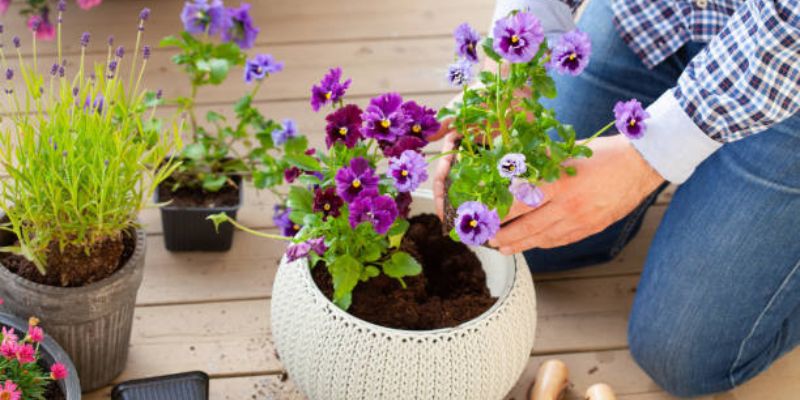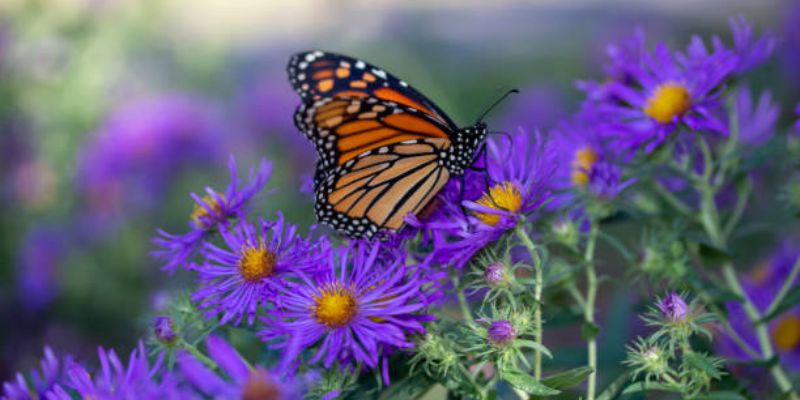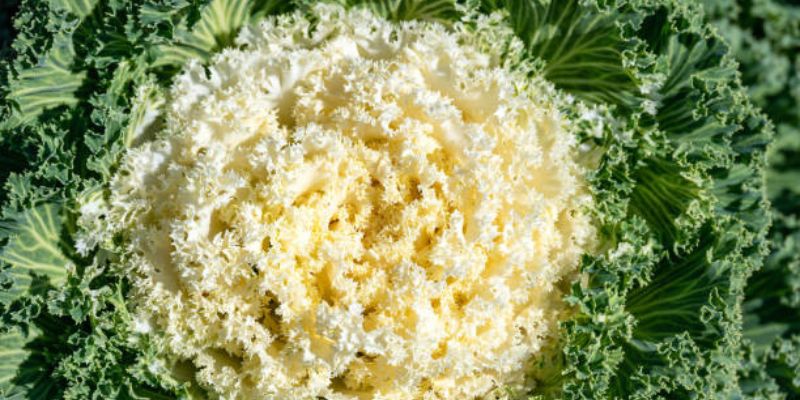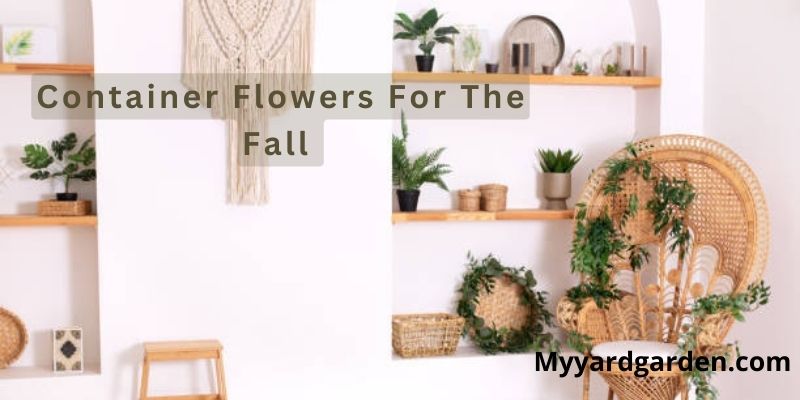Fall is a great time for outdoor gardening and enjoying the beauty of nature. Container flowers are ideal for adding vibrant color to a garden or pathway during autumn.
They come in various shapes, sizes, and colors, making them an eye-catching way to bring life to any outdoor space.
Container Flowers For The Fall
Container flowers for the fall are easy to care for, requiring minimal maintenance. With proper care, they will bloom throughout the cooler months of autumn and provide a unique display of color.
When winter arrives, these flowers can be moved inside for further enjoyment or used as decorations around the home.
We will explore the different types of container flowers that are suitable for the fall season.
Pansies

Pansies are one of the most popular container flowers for the fall. Their unique colors and face-like bloom make them a festive way to decorate outdoor spaces during the cooler months.
Pansies are low maintenance and can tolerate hot and cold temperatures; however, they will not survive in frosty conditions.
When planting pansies, choose a sunny spot with well-drained soil. It’s important to water your pansies frequently, about once every two days, and fertilize them every few weeks.
Keeping these plants deadheaded (removing spent blooms) will ensure they continue producing vibrant blossoms throughout the season.
If you live in a colder climate, planting Fall Pansy varieties will help ensure your flowers survive until the spring. By taking proper care of pansies, you’ll be able to enjoy their cheerful blooms for months to come.
Chrysanthemums

Chrysanthemums are one of the fall’s most popular choices for container flower gardens. They come in a wide range of colors, from white to yellow to pink and purple, and their long-lasting blooms can provide a splash of color to any outdoor space.
Because chrysanthemums require well-draining soil, they’re especially suited for containers that can be moved around or drained easily.
While some gardeners grow them in the ground throughout the year, those living in colder climates may wait until autumn and then pot their mums in large containers.
Be sure to fertilize your chrysanthemum regularly with an all-purpose fertilizer such as a 10-10-10 blend. With regular maintenance, these beautiful flowers will last throughout the fall season and bring plenty of color to your outdoor space.
Asters

Asters are a great addition to any fall garden. They come in various colors, from white and pink to purple, lavender, and blue.
These flowers bloom in late summer and early autumn and add texture and color to the garden. Asters can be planted in containers, window boxes, or beds.
When planting, remember that they need plenty of sun and good drainage. For best results, fertilize them every few weeks with an organic fertilizer.
To keep these plants full-bodied, pinch off dead blossoms throughout the blooming season as new buds appear. With proper care, asters will continue providing brilliant blooms throughout the fall months.
Marigolds

Marigolds are one of the most popular and easy-to-care-for container flowers for the fall season. They come in various colors, including yellow, orange, red, and white, and bi-colors like yellow and orange or red and white.
Marigolds thrive in sunny conditions with well-drained soil. Water them when the top inch of soil is dry and remove spent blooms on keeping plants looking their best.
If you want your marigolds to flower until frost, it’s important to fertilize them throughout the growing season with an all-purpose fertilizer every two weeks or so.
Some varieties of marigolds have a strong scent that deer dislike; these can be planted around the edges of your garden to provide an extra layer of protection from these pesky animals.
Consider mixing marigolds with other flowers like chrysanthemums, ornamental peppers, or daisies for a vibrant fall container garden.
With their cheerful blooms and easy-care nature, marigolds are sure to bring a smile to your face all season long.
Flowering Kale

Flowering Kale is an excellent container flower choice for the fall season. It is vibrant and eye-catching, and its hearty nature makes it resistant to frost and cold temperatures.
Kale comes in various colors, such as blue, purple, white, yellow, or pink. It can be planted directly into containers or grown in individual pots and then transplanted when ready to bloom.
Kale flowers have cup-shaped blooms that come in clusters of 2-3 and last up to 10 days or more if they are well looked after.
The foliage on kale plants can be harvested and eaten as a nutritious green vegetable with a mild nutty flavor. This hardy plant prefers full sun to partial shade and regular watering throughout the growing season to ensure that the foliage is adequately hydrated and healthy.
Fertilize with a balanced fertilizer every two weeks to keep kale plants growing strong through the cooler fall months.
With proper care, kale flowers can continue blooming until late autumn, making them a great choice for adding color and texture to container flower gardens this season.
Care And Maintenance
To keep your container flowers looking their best, it is important to care for them properly. Proper soil preparation, watering, fertilizing, and pruning techniques are essential to keeping your plants healthy.
Soil Preparation
Container plants need well-draining soil rich in organic matter. It should be light and airy, so adding perlite or vermiculite will help to keep it from becoming waterlogged and provide better drainage.
Mixing in a slow-release fertilizer (at half the recommended strength) when planting can help to ensure your flowers get the nutrients they need for strong growth throughout the season.
Watering
After planting, you’ll want to moisten the soil thoroughly and check it daily for signs of drying out. Keep an eye on your containers, if they look wilted or droopy, give them a long drink of water until the soil is evenly moist.
It’s important to remember that container plants dry out much more quickly than those planted in the ground, so it’s best to water them regularly and deeply rather than too often and shallowly.
Fertilizing
Depending on the type of flowers you have chosen, they may need a little extra fertilizer during their active growth phase.
A liquid or soluble fertilizer that is high in phosphorus can be added with each watering once every two weeks, reducing applications as cooler temperatures set in.
Pruning
As your flowers bloom, you can deadhead spent blooms by snipping off the stem below the flower head, prompting new buds to form.
If there are any dead leaves or stems, these can also be removed to help ensure that the plants stay healthy and vigorous.
Protection From Frost And Cold Temperatures
In areas with cold winters, it’s important to ensure your container flowers are protected from frost damage.
If possible, move pots into an area sheltered from the wind that doesn’t get too cold, such as a garage or unheated shed.
Be sure to check the soil periodically, if it feels dry to the touch, water lightly so your flowers don’t dehydrate over winter.
Adding a layer of mulch can also help keep moisture and maintain warmer soil temperatures during colder weather.
With a little extra care and attention, your container flowers should be able to make it through the season in good shape.
Give your container flowers enough sunlight, water, and nutrients throughout the fall season. They should provide you with a beautiful display of color until the temperatures drop too low for them to survive.
With careful selection and attentive care, your plants will reward you with months of brilliant blooms.
Design And Arrangement
There are endless possibilities when designing and arranging container flowers for the fall. With careful selection and placement, you can create beautiful and unique displays to beautify your outdoor or indoor space.
Choosing The Right Container
When selecting a suitable container for your flower arrangements, consider its size, shape, style, texture, and color. The container should be appropriate for the setting in terms of aesthetic appeal and practicality.
Larger containers are best suited for larger areas such as patios or decks, whereas smaller containers work well in confined spaces like apartments or balconies.
Furthermore, an appropriately sized container will ensure that all flowers receive the necessary water and nutrients from the soil or potting mix, so they don’t look wilted or dry.
Color Coordination
When choosing the colors for your container flowers, consider what type of look you want, be it bright and cheerful or muted and subtle.
Fall blooms come in shades such as oranges, reds, and yellows. You could also add deeper purples, blues, or even white/creamy tones to give depth and contrast to the display.
Combining Different Types Of Flowers And Foliage
To achieve a more eye-catching effect when designing container flowers for the fall, combine different types of blooms and foliage.
You can also introduce interesting shapes by adding ornamental grasses to your display, the feathery plumes of perennial varieties.
Creating A Theme Or Focal Point
To tie all the elements together in your flower arrangement, consider creating a theme or focal point.
You could pull out one particular shade from the selection and use that as a base color, then add flowers and foliage of other subtle tones to complement it.
Alternatively, you could use a single type of bloom, such as sunflowers, and fill up the container with them for an eye-catching display. Whatever your choice is, make sure all the elements in the arrangement are cohesive and look natural yet striking.
Considering all these design principles when creating your container flower arrangements for the fall, you can easily transform any outdoor or indoor space into a stunning visual masterpiece.
Conclusion
Container flowers for the fall make a beautiful and vibrant addition to any outdoor or indoor space.
With a careful selection of plants, containers, colors, and arrangements, you can create stunning displays that will last throughout the season.

